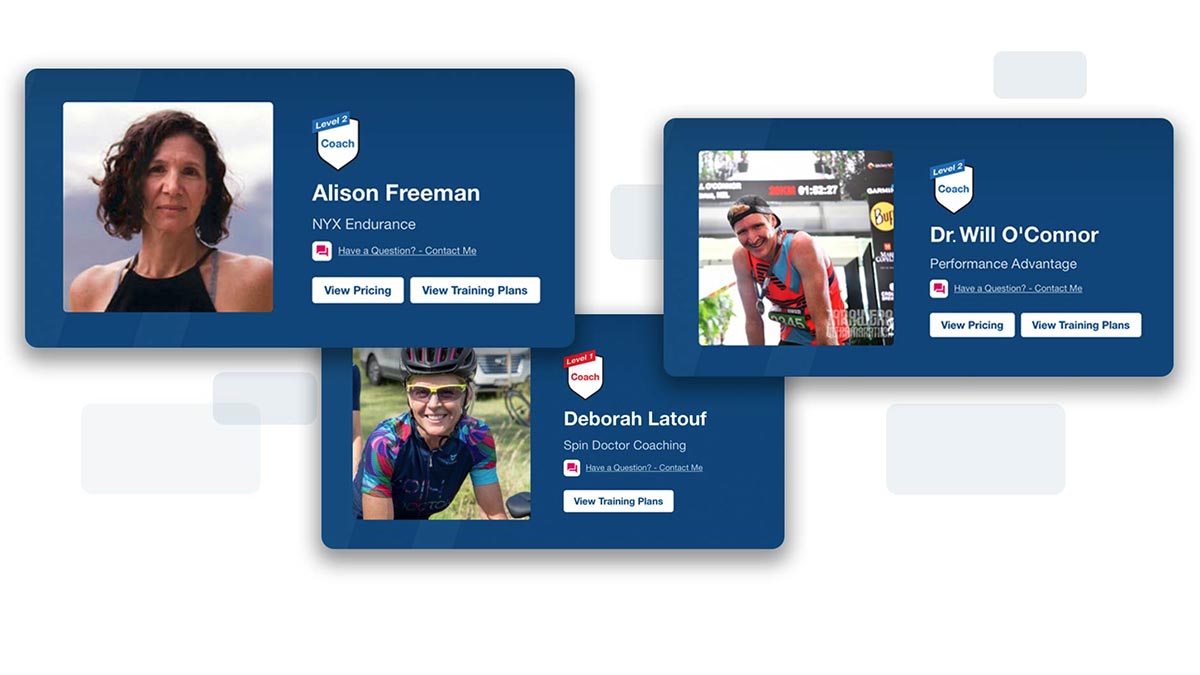As unfortunate as it is, injury and endurance sports tend to go hand in hand. This goes especially for athletes who have trained and raced for a long time, as the likelihood of incurring an injury increases the more your athletes stress their bodies. When it comes to chronic pain, you have to tread carefully as a coach.
Oftentimes it’s very difficult to coach an athlete with chronic pain because you can get caught up in a tricky dichotomy: you don’t want to injure them more, but you want to help them work around their chronic pain so as to achieve positive training and racing outcomes. Here are a few tips that will help you strategically work with athletes suffering from chronic pain. Please note that it’s important to remember each athlete is different, so some of these tips may be used more or less depending on what the individual needs.
Educate Yourself on Their Chronic Pain
It is your responsibility to understand the source and severity of your athlete’s pain. I always start with a discussion about what their pain is, where it came from and what triggers it the most. I’ll then go on to ask about their holistic day-to-day pain management tactics, such as what their daily work life is like, their recovery habits, stress levels and nutrition. Last, we’ll explore the suggestions and solutions provided by their health professional (if they have one).
If I’m not knowledgeable about their specific injury, I will do my own independent research. Having a solid understanding of their pain source and letting the athlete discuss it with you strengthens your coach-athlete relationship. This definitely helps the athlete feel that you are on their side and will enhance further coaching tactics to help mitigate chronic pain.
Get a Professional Analysis
Since you may not be a medical professional, you want to make sure that the athlete is working one-on-one with a physical therapist, doctor or health professional that can help them relieve their pain. Sometimes it’s helpful to speak with the provider directly to get a clear perspective on their pain management plan. Additionally, you can offer functional sports movement or gait analysis to see how the chronic pain affects the body, assuming it is not a systemic chronic pain issue. This allows you to help guide specific patterns or workarounds.
Know When to Hold Your Athlete Back
Athletes are stubborn and, in many cases, will do anything to participate in their sport. This includes continually testing an injury that will inevitably drive greater chronic pain. Use your experience and best judgment to determine when they are overreaching in their training. It’s essential to strategically hold your athlete back and discuss the benefits of increased rest. Recovering is key—while other areas of the body may recover faster than the painful area, it ultimately should dictate the performance.
Use TrainingPeaks to Track Injuries and Schedule Pre & Rehab
One of the best things for coaches and athletes to keep track of in TrainingPeaks in the post-workout comments is their daily pain level. This enables you to look back and track patterns of what caused periods of heightened chronic pain. It also helps you both predict worse bouts of pain before they happen and teaches you how to prevent and manage chronic pain.
Additionally, you can insert an “other” workout in their training plan dedicated to pre-hab, rehab, etc. and have them document it with their training device as well. It helps to set the habit and organizes their chronic pain management.
Remove Fixation on Victim Mentality with Acceptance
If your athlete is struggling with chronic pain, there’s a high likelihood it’s mentally all-consuming. From a psychological perspective, the only thing you can do to help them perform their best is to guide them toward acceptance.
Health professional Eric Ottenbreit, PT, DPT, states that “Treating chronic pain is often more of a management situation rather than curative. As such, being able to accept your body as it is while still maintaining performance readiness sometimes means compartmentalizing the pain or putting it in a “box” and then performing the training or event.”
When appropriate, open the pain management box and address the issues independently or with a healthcare team. Learning to compartmentalize pain can be difficult, but it’s possible. Practicing compartmentalization is a way of freeing up mental and emotional space and enabling you to move.









